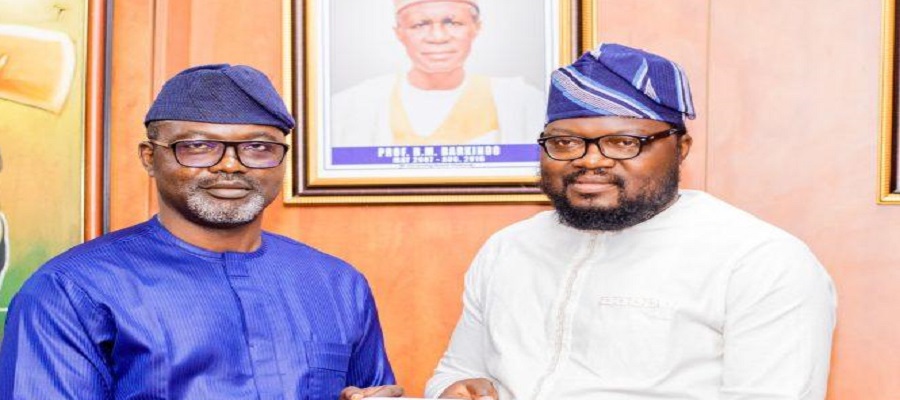News
Communication Networks & Infrastructure Security (1)
Africa is growing…..
The continent’s rate of growth is projected at between 5 – 7 % over the next 3 years (World Bank). Compared to the sub- 3% rates of growth for Europe and North America (if you are to disregard recession rumours), and you can see that Africa is indeed growing.
With the increasing rate of development, both within individual countries and across the regions, there has been an increase in the exploitation, extraction and development of natural assets and resources. This has led to the consequent growth in creation and development of infrastructure, industries, factories, and the capital assets and inventory across the African landscape. The Chinese for example, has trade worth US$50 billion as of Africa. Much of this has been tied to infrastructure developments and investments.
The new investment and development ‘race’ for Africa by investors, extractive industries, speculators, joint ventures, Foreign countries et. al, has spawned a side-effect that has to be taken account of. With rapid growth and the creation of wealth and capital assets, there has been an increasing need for quality and comprehensive Communications and Security infrastructure . This is required to provide a capability to monitor, track and manage the increasingly critical additions to the natural, economic and infrastructural landscape that we now see within and about us.
Firstly, when you create infrastructure; roads, schools, bridges, industries, factories, dams, power stations, etc. you need to plan how to design, equip, supply (raw materials in the beginning; supplies after launch), manage and maintain these assets.
To plan, you need to communicate; to bring people, ideas, tasks, requirements, instructions and updates to their personnel and stakeholders that need to be aware, kept in the loop; instructed, updated.
Having planned (and hopefully been successful), you then need to manage.
You manage the infrastructure assets for much the same reasons as when you are planning, but with more of a focus on the need to report, monitor, update, pass instructions and updates on progress, utilisation, performance and the like to stakeholders and interested parties.
However, an key aspect of infrastructure implementation in Africa, especially when compared to comparative asset implementation in the first world, has to do with the need to manage assets and inventory over large distances, especially when considering distance from asset to manager and from source to consumer.
Hospitals, power stations, grid and distribution infrastructure, Mobile and public telecomms networks, switching and transmission assets, factories, industries, extractive, mining and agro-allied operations – all need to be managed.
Locally and often in a regional or centrally co-ordinated Command-and-Control model to bring about the necessary efficiencies (Total Cost of Ownership (TCO)) and Return on Investment (RoI) for their investors, stakeholders – hopefully resulting in improved, quality delivery of public services to the communities and peoples who are supposed to be receiving this benefit.
So there are two parts to this equation – firstly internal communications between the nodes of control and organisation within the entities and organisations that either own and/or maintain these infrastructure assets and inventory.
Then there are the external communications systems that provide communications between the infrastructure managers and the stakeholders interested in their delivery – government and their agencies, regulatory bodies, communities, etc.
How are these set up? What priority is given to the design, planning, implementation and, upon launch, maintenance and upgrade (yes, upgrade) of this vital resource to support the effective management of these vital assets towards meeting their key Priority objective – Delivery?
How well can we remotely monitor our often widely-dispersed (and not easily reachable) assets out there in the field? How effective are we in tracking their location (GPS), performance (IP, Data networks), maintenance requirements, (SCADA) etc.?
How well do we use networked communications – in a secure (can’t be hacked or intercepted), resilient (multiple levels of backup and transmission) and redundant (multiple, independent means of operation) manner to ensure that assets that have been developed and implemented at often high capital costs in terms of foreign-acquired currency, are being maintained and manage at an optimum level of performance and efficiency?
What priority is given to its budget, assessment, resilience, redundancy ..? Is a Single Point of Failure (SPOF); e.g. single power source; that goes, it all goes.
I know of an incident at a Petroleum Product Tank Farm facility where the single power/network resource ran for the entire plant and all assets on it; i.e. no resilience, no redundancy. As the fire took out the network, so went the firefighting capability at a stroke….
You can imagine what happened to the facility after that…
And as to the rebuilding/replacement costs (value of money/NPV) and the impact on supply of a critical commodity for economic development,….
And then, there’s the Security component… but that’s another article
Email charges: charles.ekanem@googlemail.com
News
LG Launches “Radio Optimism” Campaign to Spread “Life’s Good” Through Music

LG Electronics has launched a new brand campaign, “Radio Optimism,” designed to help strengthen meaningful human connections and spread optimism through shared musical experiences.

This initiative aligns with LG’s brand promise, “Life’s Good,” and addresses the growing challenge of forming genuine relationships in a technology-driven world.
The Radio Optimism campaign seeks to counteract the disconnection often felt in an era dominated by superficial interactions, such as likes and comments on social media. By harnessing the power of music, LG aims to foster deeper bonds among individuals, promoting a more fulfilling life.
“As technology advances, meaningful human connections become increasingly vital to enrich our lives. LG continues its commitment to bringing optimism into customers’ daily lives, staying true to our enduring brand promise of ‘Life’s Good,’” said Kim Hyo-eun, head of LG’s Brand Management Division.
This campaign reinforces LG’s commitment to creating enriching experiences in digital spaces where today’s consumers spend significant time. Building on this mission, LG has continuously engaged with younger audiences through participatory campaigns that bring the Life’s Good philosophy to life.
Last year’s “Optimism your feed” campaign leveraged social algorithms to foster positivity on social media. This new initiative specifically seeks to address the paradoxical disconnection in an era of hyper-connectivity.
“One of the most reliable predictors of happiness is having deep and meaningful relationships,” said Jean M. Twenge, Professor of Psychology at San Diego State University. “Yet today, many people are spending more time online and less time connecting in person. Social media in particular tends to create shallow relationships rather than the deep connections people need.
“It’s common for people to have hundreds of followers but no one to talk to in real life if they need support. We need to build more meaningful connections with those around us. That might turn around the pronounced decline in happiness that’s occurred over the last decade.”
A new global study* from LG on social connection reveals that 68 percent of people find it harder to make real friends, and a third reported having one or fewer meaningful connections in the past month, with 8 percent experiencing none at all.
Inspired by traditional radio’s unique way of connecting people through music and storytelling, the Radio Optimism campaign transforms this concept into an interactive platform where participants can create and send personalized songs to their loved ones.
Users can easily create new songs using AI-powered tools, which are thoroughly trained on a curated music dataset. These tools interpret user prompts to produce unique musical pieces and generate matching album art, providing an engaging and personalized experience. Once generated, these songs can be sent to recipients to deepen their connection and made available for others to discover worldwide.
According to the survey, nearly 9 in 10 respondents believe that meaningful connections lead to a more optimistic outlook on life. By providing a platform for individuals to express their feelings, this campaign aims to foster deeper connections and help individuals enrich their lives while spreading optimism in their own ways.
The campaign website is available in English and Spanish, with plans to support additional languages in the coming months to enable broader participation. The official website can be found at RadioOptimism.lg.com.
News
Nigeria’s Electricity Output Climbs 10.92% in Q1 2025, Boosted by Thermal Plants

Nigeria’s electricity generation rose by 10.92% in the first quarter of 2025, driven by improved operational capacity and better availability of thermal and hydropower plants supplying the national grid.

This is according to the latest report from the Nigerian Electricity Regulatory Commission (NERC) for Q1 2025.
Total energy generated stood at 10,304.47 gigawatt-hours (GWh), up from 9,289.95 GWh recorded in the previous quarter. The increase highlights stronger performance across multiple power plants, supported by improved grid dispatch conditions.
NERC noted that average hourly generation on the grid also grew by 13.39%, rising to 4,770.59 megawatt-hours per hour (MWh/h) from 4,207.41 MWh/h in Q4 2024—an increase of 563.18 MWh/h.
“The hourly generation and the total generation increased by 13.39% and 10.92% respectively in Q1 2025 compared to Q4 2024. This rise is linked to an increase in the cumulative available generation capacity of grid-connected plants,” the report stated.
A total of 19 power plants boosted their output during the quarter, contributing significantly to the overall rise in generation.
Thermal power plants were the main drivers of growth. Out of the 23 thermal plants connected to the grid, 16 recorded higher average hourly output compared to the previous quarter.
Top contributors included Delta_1, which added 157.58 MWh/h, followed by Geregu_2 (71.95 MWh/h), Egbin_1 (68.20 MWh/h), and Afam_2 (68.03 MWh/h).
Hydropower plants also supported the growth, though at a smaller scale. The five grid-connected hydro stations posted a combined increase of 54.93 MWh/h, marking a 4% improvement. Zungeru_1 led with a 23.55% rise, while Shiroro_1 and Kainji_1 grew by 12.21% and 4.80% respectively.
This first-quarter improvement reflects ongoing efforts to stabilize power supply through better plant maintenance, enhanced grid management, and more consistent dispatch across regions.
However, challenges such as fuel supply to plants, equipment reliability, and high operating costs continue to limit the full potential of Nigeria’s power generation capacity.
News
DBI, Miva Open University Partner to Advance Digital Innovation, Education

Digital Bridge Institute (DBI) and Miva Open University, Abuja, have signed a Memorandum of Understanding (MoU) to jointly promote digital technology and academic excellence in computer science and innovation.

Mr. David Daser, president/CEO, DBI, and Professor Tayo Arulogun, vice chancellor, Miva Open University.
DBI, a Federal Government-owned ICT training institute with headquarters in Abuja and campuses across Nigeria’s six geo-political zones, hosted the signing ceremony at its headquarters.
The MoU marks a significant step in formalizing and strengthening the existing relationship between the two institutions.
Signing on behalf of their institutions were
Speaking during the event, Mr. Daser praised Professor Arulogun’s leadership and commitment to academic development, which he said made the partnership possible. He emphasized that unlike many MoUs that remain inactive, this collaboration is set to deliver tangible results.
“We value this partnership and are confident it will meaningfully contribute to Nigeria’s education sector. DBI is fully prepared to implement the agreement and drive an impact across our campuses in Enugu, Abuja, Kano, Lagos, Asaba, and Yola,” Daser said.
He added that the collaboration would strengthen DBI’s National Innovation Diploma (NID) program and other initiatives through shared resources and new opportunities.
Professor Arulogun, in his remarks, highlighted the need for greater collaboration among Nigerian universities, criticizing the prevalent “do-it-alone syndrome.”
“Many institutions prefer to operate in silos, but collaboration is key. Pooling resources and working together will enhance capacity and academic output,” he stated. “With this partnership, we are ready to hit the ground running from student exchange to joint innovation projects like hackathons.”
He noted that hackathons provide platforms for discovering hidden talents and fostering innovation, and Miva is eager to integrate such activities into its academic programs.
Mr. Emeka Nzeih, head of Learning and Development, DBI, outlined the partnership’s key focus areas: student internships, real-world project collaborations, joint research in fields like AI, robotics, and cybersecurity, and shared access to DBI’s ICT labs and equipment for Miva’s students and faculty.
According to Nzeih, the initiative aims to enhance practical learning, foster innovation, and build capacity through collaborative training, research, and mentorship.

 Telecom2 days ago
Telecom2 days agoMTN Nigeria Debuts Game-Changing CPaaS Platform at NextNow Forum

 News2 days ago
News2 days agoAMCON Confirms ₦100Bn Sale of Ibadan DisCo Amid Legal Disputes

 E-Financial2 days ago
E-Financial2 days agoNAICOM Issues New Licenses to SanlamAllianz Life, General Insurance

 E-Financial1 day ago
E-Financial1 day agoCourt Affirms NIBSS Authority to Manage BVN

 E-Financial2 days ago
E-Financial2 days agoGTCO to Become First Nigerian Bank to List on London Stock Exchange

 E-Business2 days ago
E-Business2 days agoDomain of Deception as Attackers Deploy Spyware Under Guise of Legal Threats

 Telecom1 day ago
Telecom1 day agoMTN, 9mobile Commence Ground-breaking National Infrastructure Partnership

 News2 days ago
News2 days agoDBI, Miva Open University Partner to Advance Digital Innovation, Education















